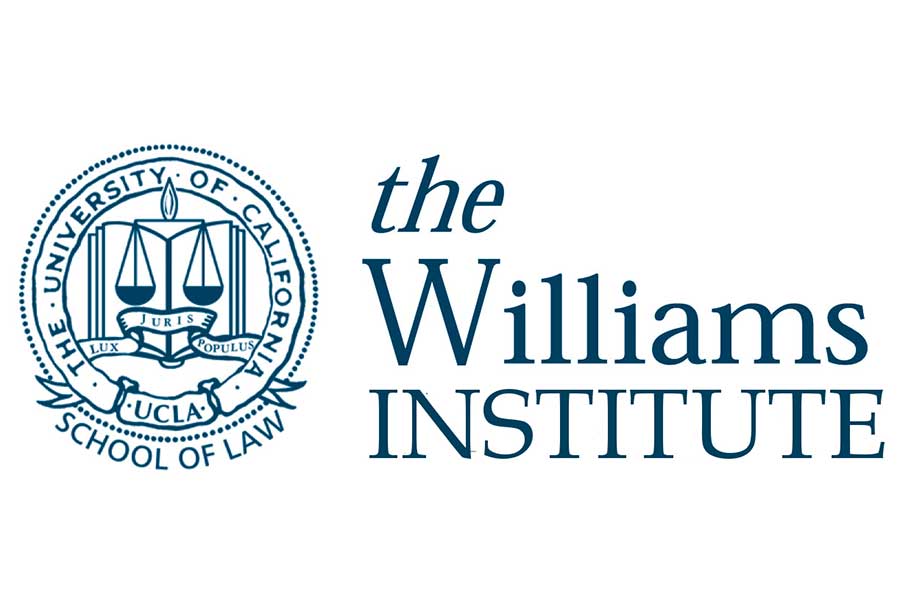A new report from the Williams Institute at the UCLA School of Law cites demographics for adult LGBT people in the United States that conflict with previous studies and suggest under-identification among certain groups — notably men, white people and black people.
According to the new analysis released earlier this month, an estimated 4.5 percent of U.S. adults identify as lesbian, gay, bisexual or transgender. Those adults tend to be younger and poorer than the population at large. The Institute took previously released results from the Gallup Daily Tracking survey, examined the data more closely and developed a detailed demographic profile of the adult U.S. LGBT population.
While the data continues to be fluid and does not include LGBT people 18 and under, what the Institute found is enlightening for those providing services to the LGBT community as well as those polling for upcoming elections.
In 2011, the Williams Institute estimated the U.S. LGBT population at 3.5 percent based on other survey data. The Williams Institute specializes in LGBT research for law and public policy.
The place with the highest percentage of LGBT people was Washington, D.C., with nearly 10 percent — the number most commonly associated with the number of LGBT people in the United States.
North Dakota had the lowest number at 2.7 percent. In the tristate area, Pennsylvania and New Jersey both came in at 4.1 percent (the same as Texas) and Delaware at 4.5 percent (the same as Florida and Hawaii). No state came close to the numbers for D.C., though California was 5.3, New York 5.1 and Massachusetts 4.7. The study also found that about 30 percent of LGBT people have children.
According to the study, the self-identifying LGBT population also skews younger. Only 23 percent are age 50 or older, compared with 47 percent of non-LGBT adults, and 56 percent of LGBT adults are under age 35 compared with 28 percent for the non-LGBT population.
But the actual demographics of the U.S. differ significantly. Americans ages 45-64 alone comprise 26.4 percent, with those 65 and older comprising another quarter of the population.
Kerith Conron, research director at the Williams Institute, said those numbers may be reflective of changing social norms.
“Younger people are more likely to actually live as LGBT and to identify that way because they are growing up in a time when it’s more acceptable to acknowledge those feelings and to act on them,” Conron said.
That may also explain some other demographics illuminated by the study. It shows that only 12 percent of black Americans identify as LGBT, despite being 17.8 percent of the population, and that 58 percent of whites identify as LGBT, when they are 64 percent of the population. Thus, the statistic showing the highest number of self-identified LGBTs in D.C., when the District of Columbia also has the highest black population in the nation at 47.1 percent, seems a demographic outlier.
The study also indicated that the LGBT population is economically disadvantaged; more likely to lack access to sufficient nutrition with a full 27 percent suffering food insecurity. The analysis also found the LGBT population has annual household incomes below $24,000. A PGN series in January found that a majority of the LGBT population lives in poverty or near poverty, with trans people of color at the highest risk of being unemployed.
The Williams Institute study found more people of color identifying as LGBT overall than their white counterparts. Only 42 percent of men identified as LGBT, as opposed to 58 percent of women. These figures suggest more fluidity among women in sexual orientation, which has long been established, with more women identifying as bisexual than men.
This study confirmed its previous estimate of the transgender population at 0.6 percent, or approximately 1.4-million U.S. adults.
According to Conron, the 1-percentage-point increase in the LGBT population from 2011 was “likely the result of more people feeling comfortable responding to questions about their sexual orientation.”
Polls and surveys within the past 20 years have estimated the LGBT population well below the 10 percent that sexologists linked to Alfred Kinsey’s work in the 1940s-’50s. But the skew in certain demographics suggest the numbers in the Williams Institute study underrepresent the actual demographic, particularly in the 45-64 age group.
“In surveys that are more anonymous and private, closer to 10 percent of respondents say they have same-sex attraction, even if they stop short of saying they are lesbian, gay or bisexual,” Conlon said.

